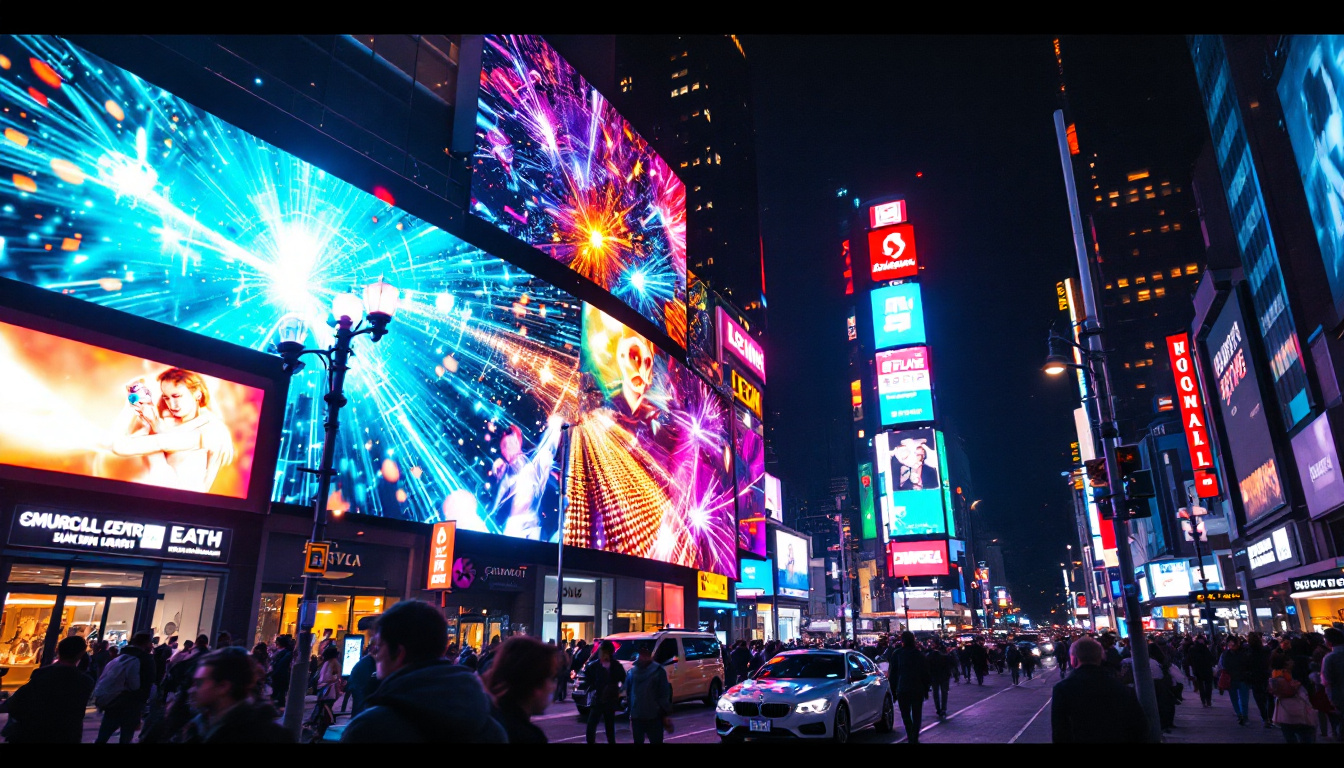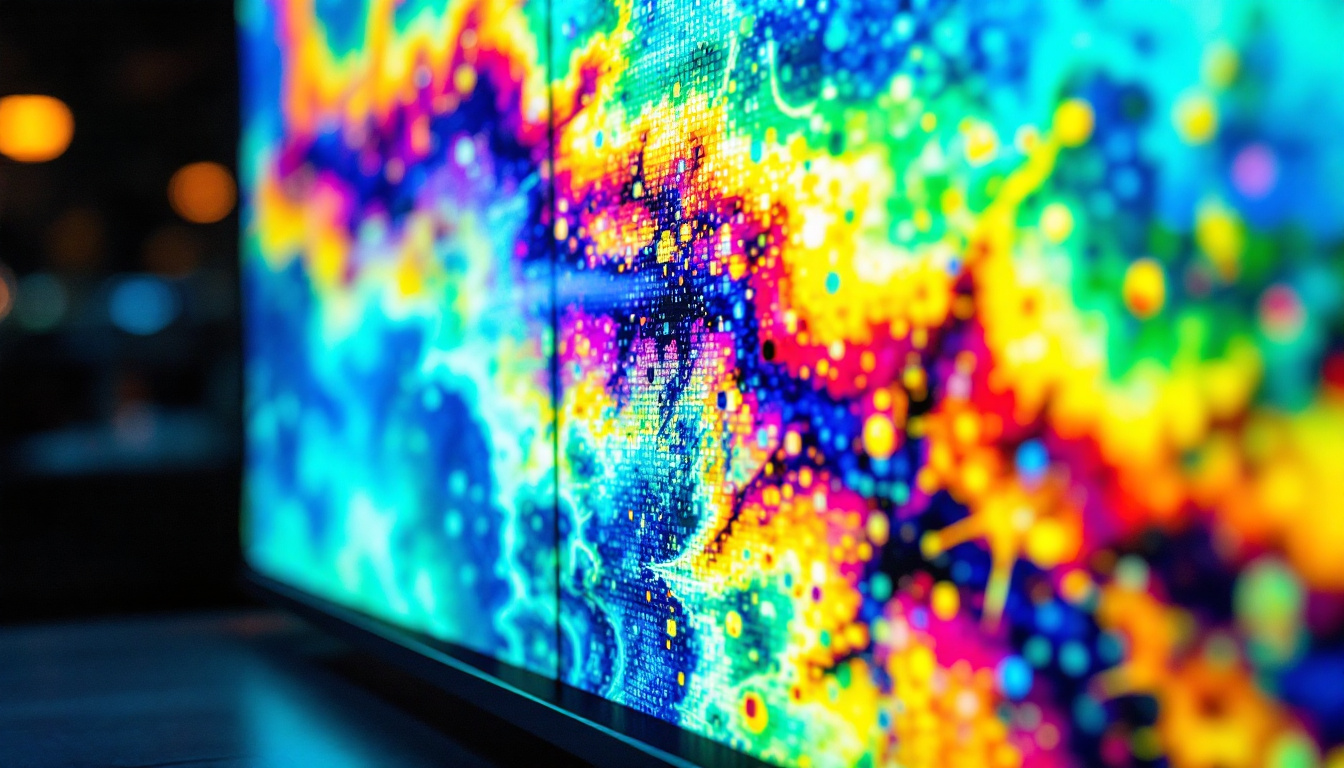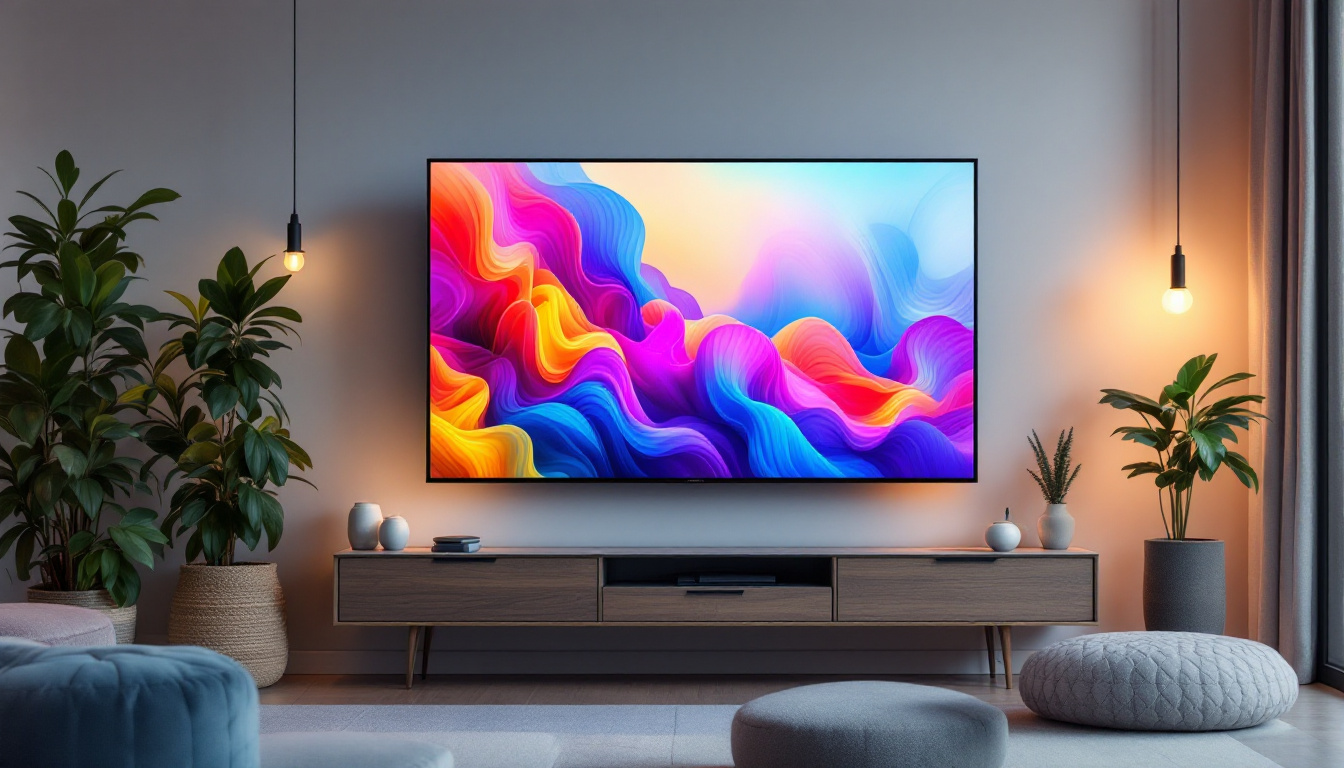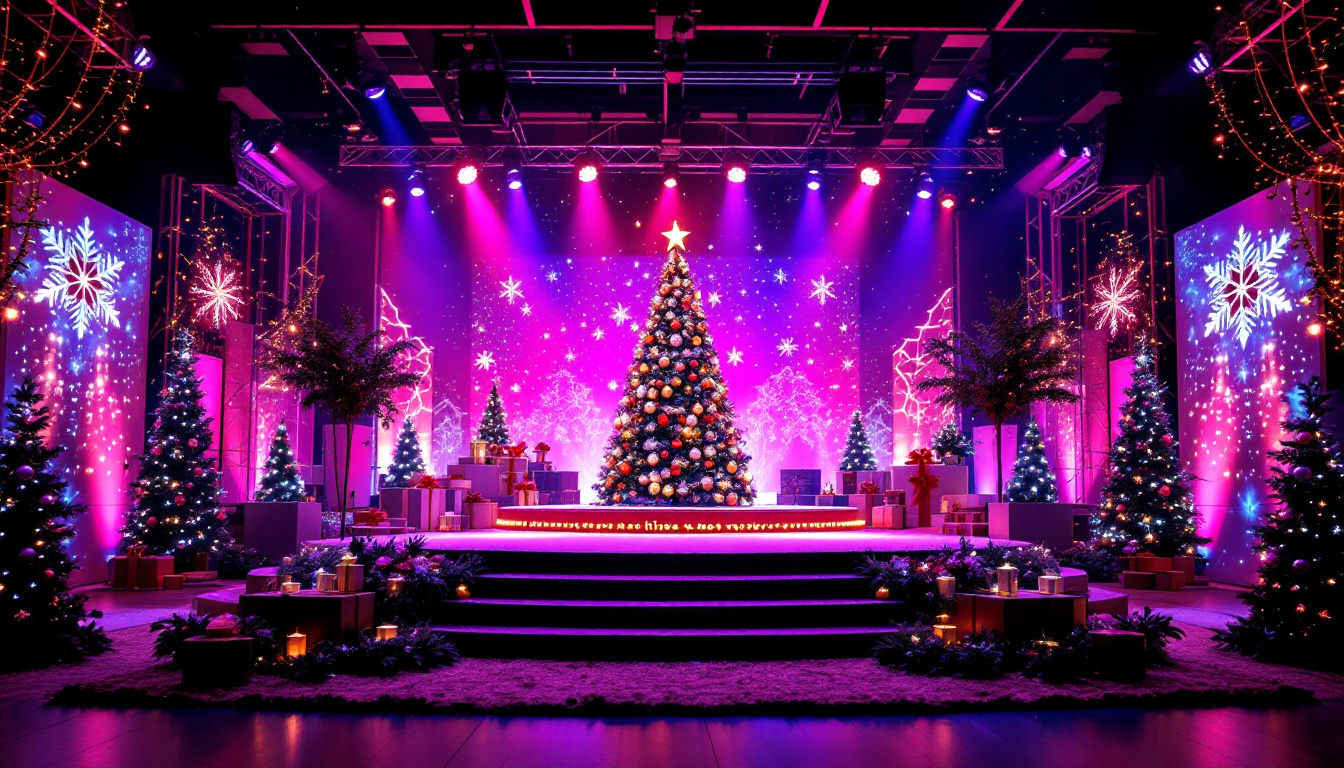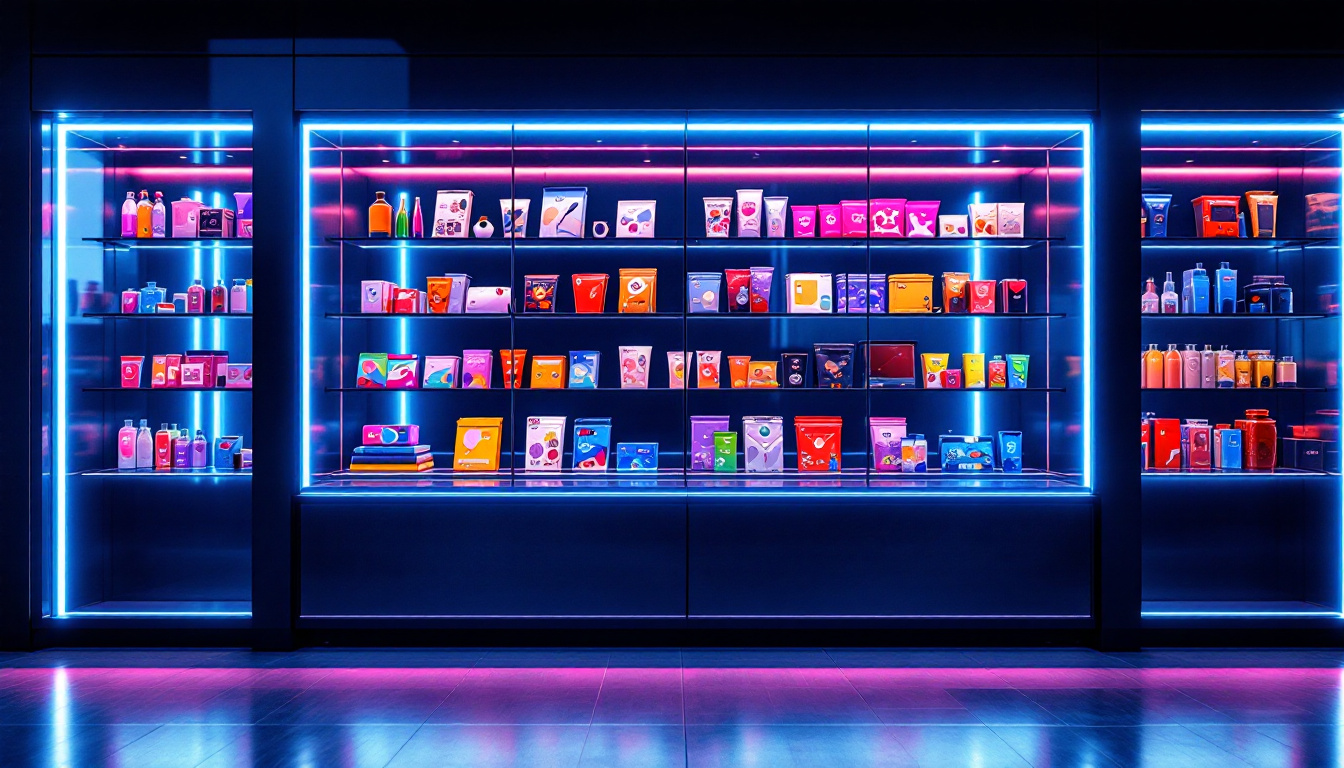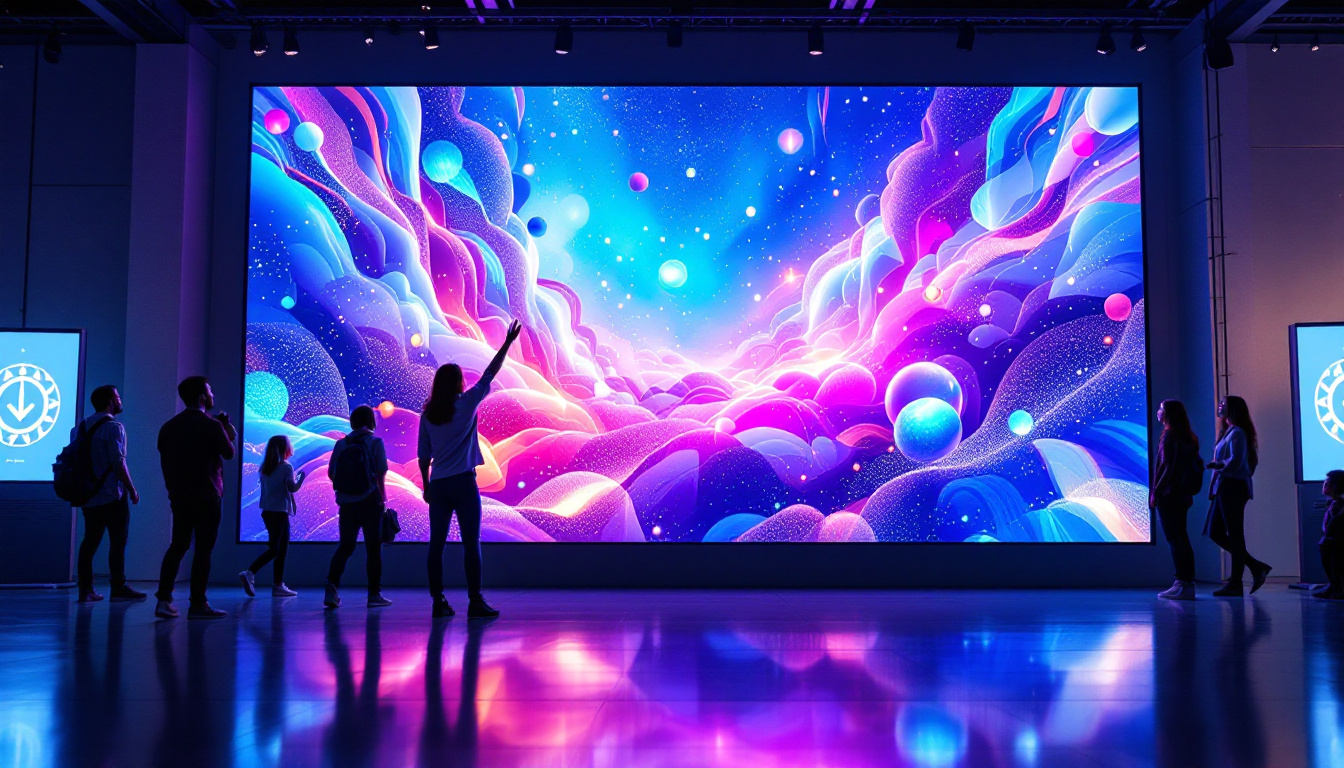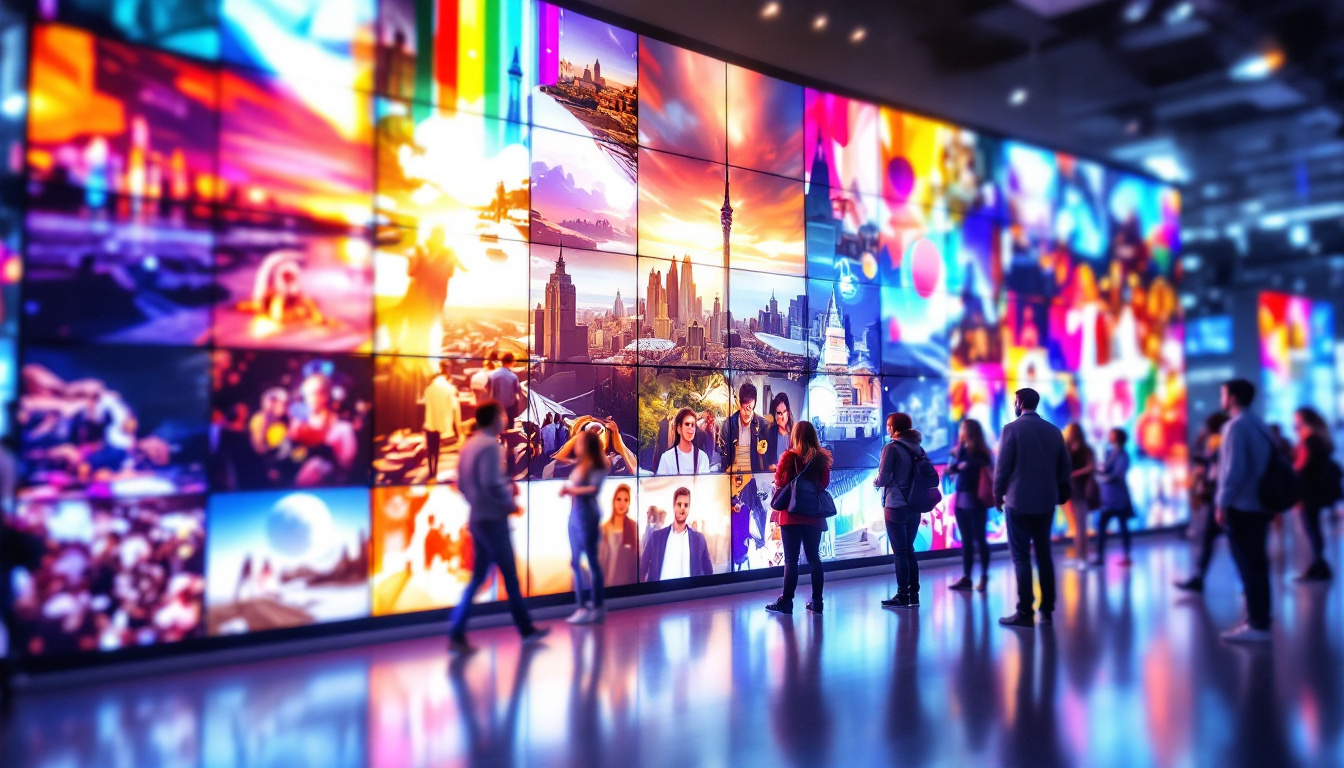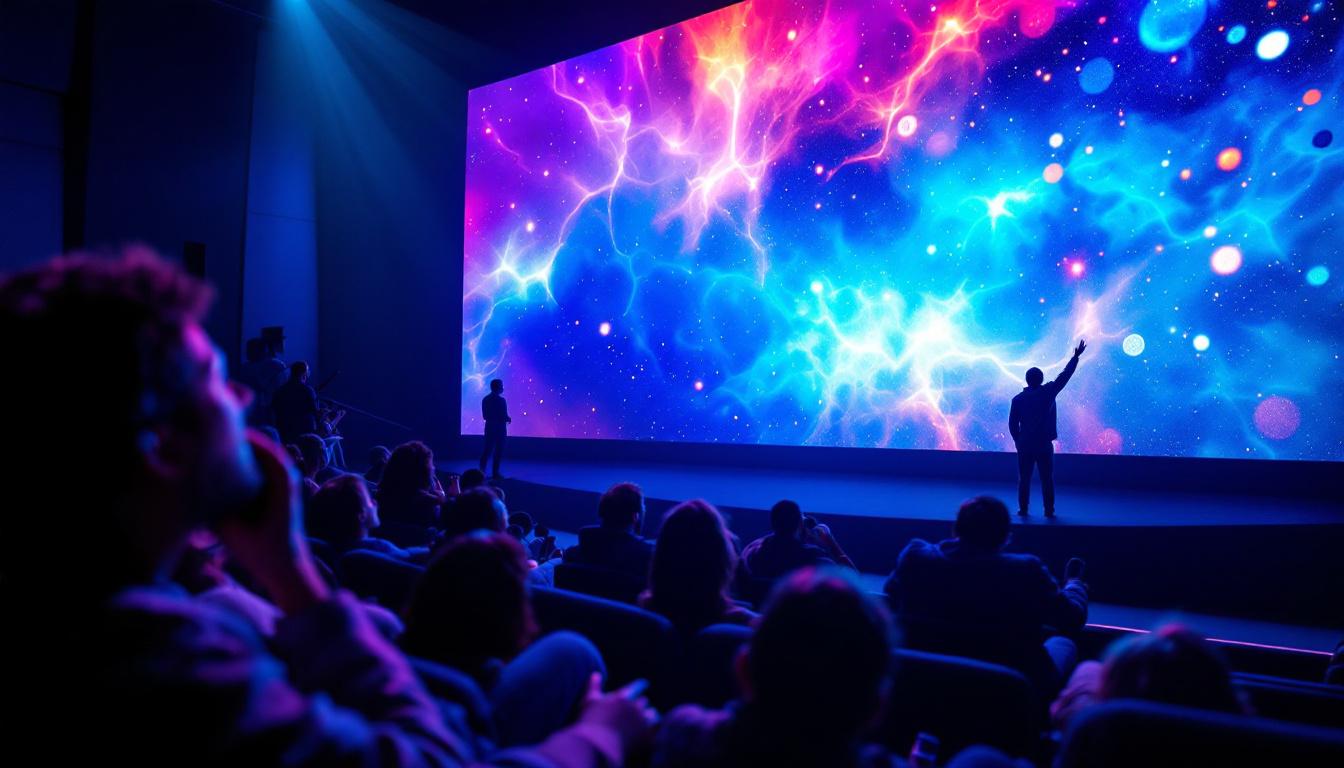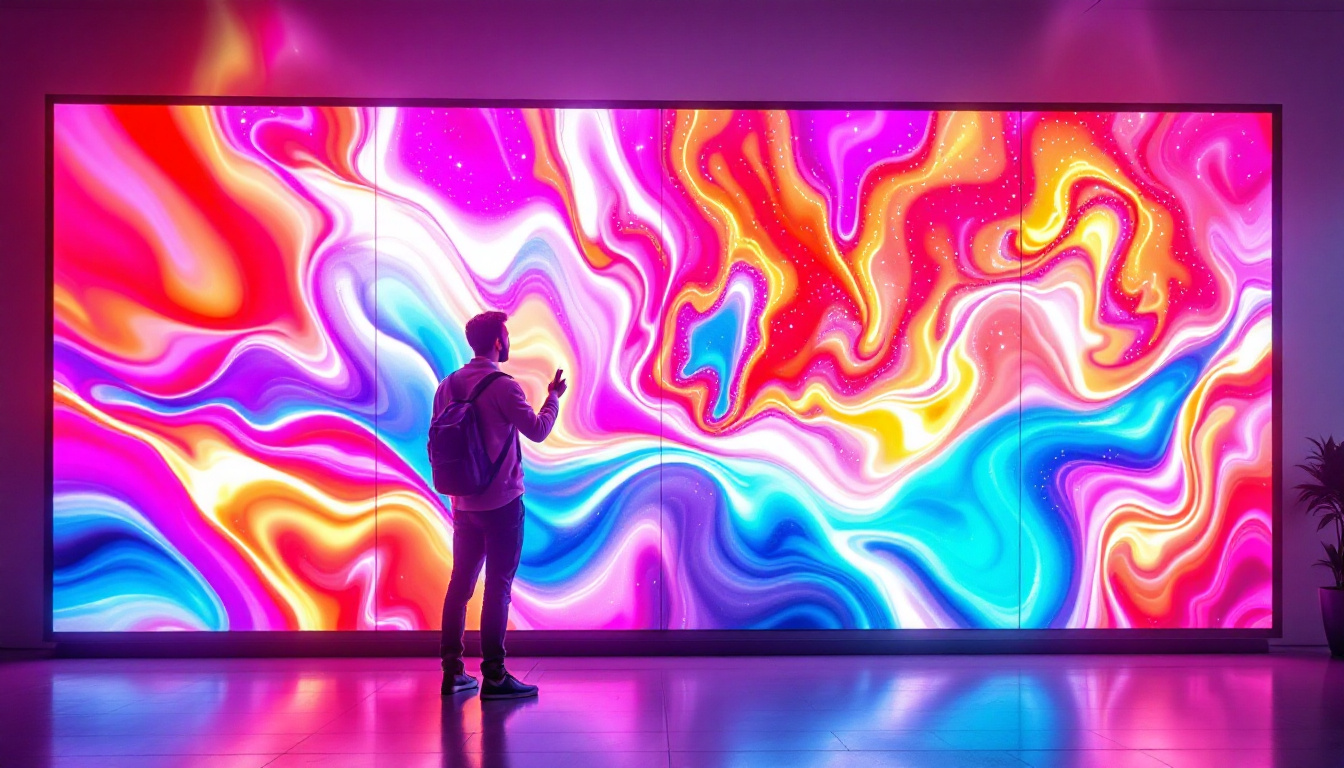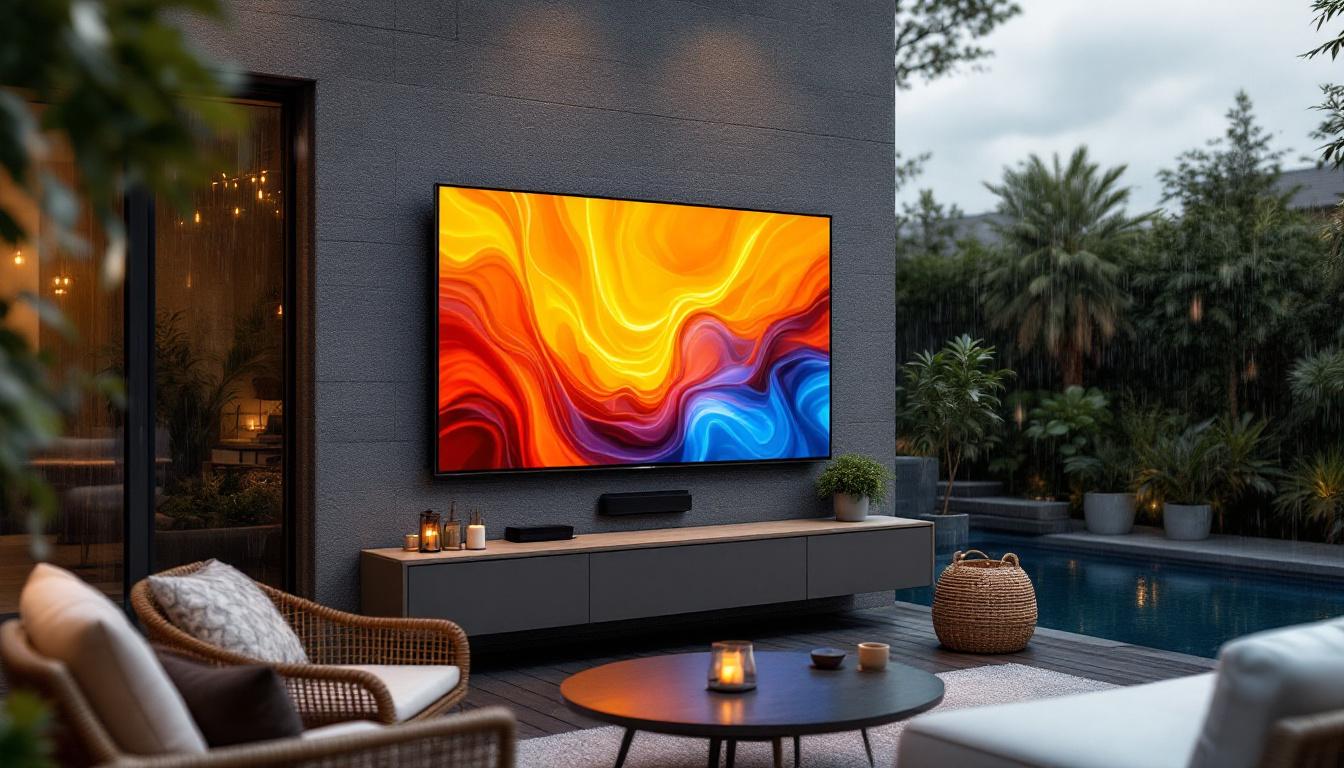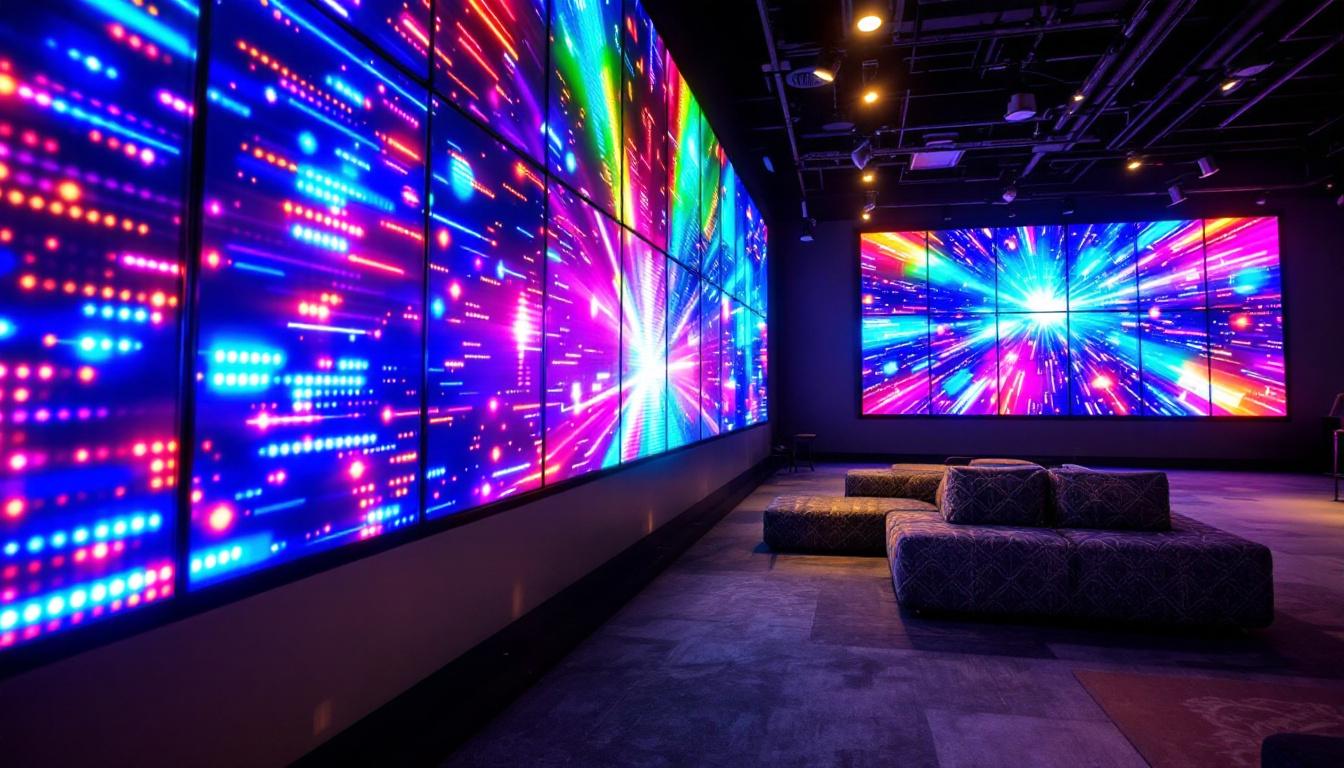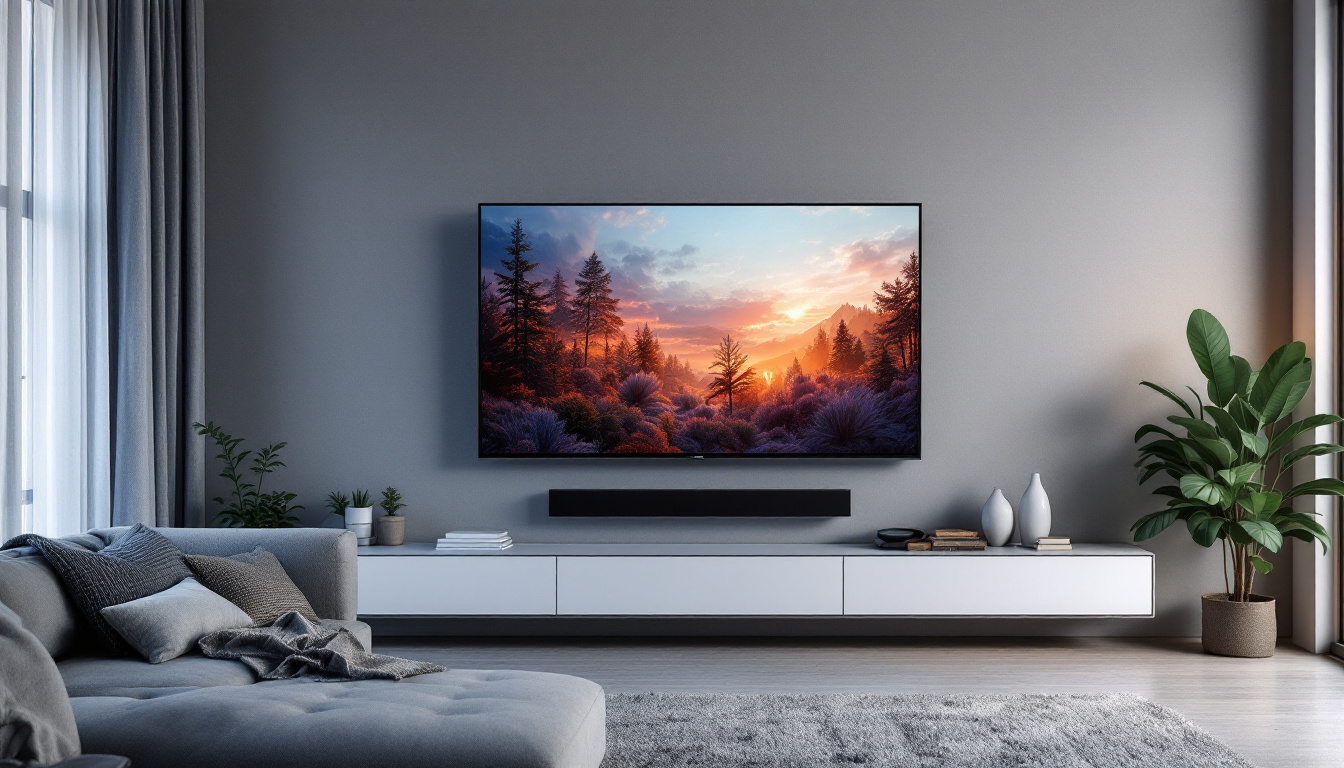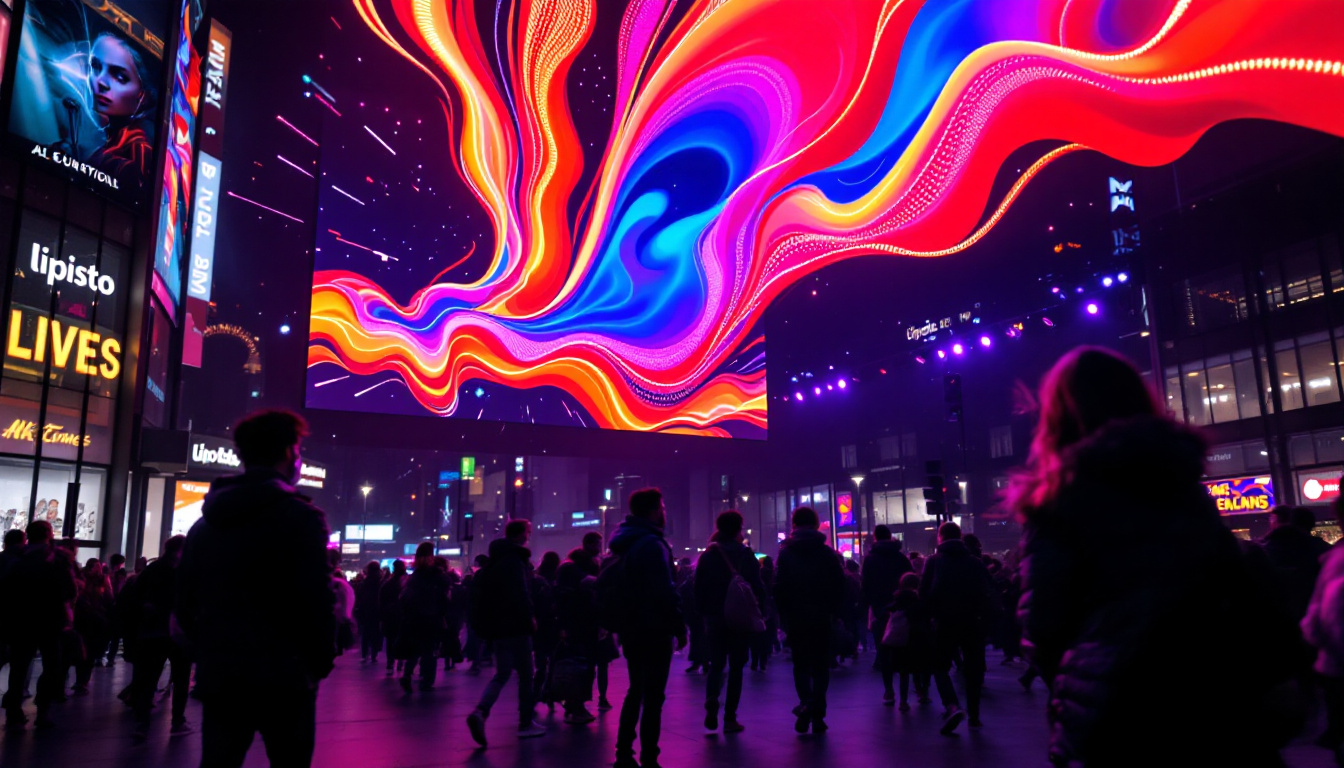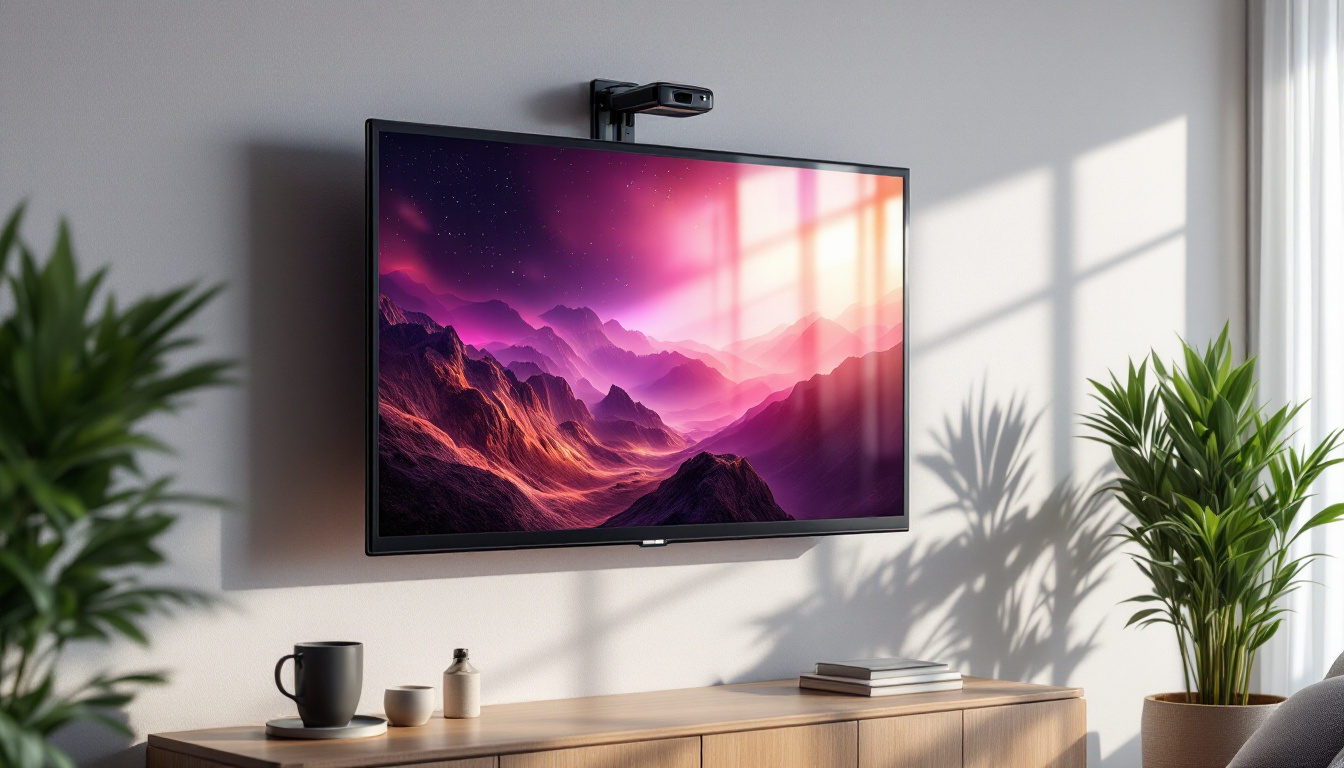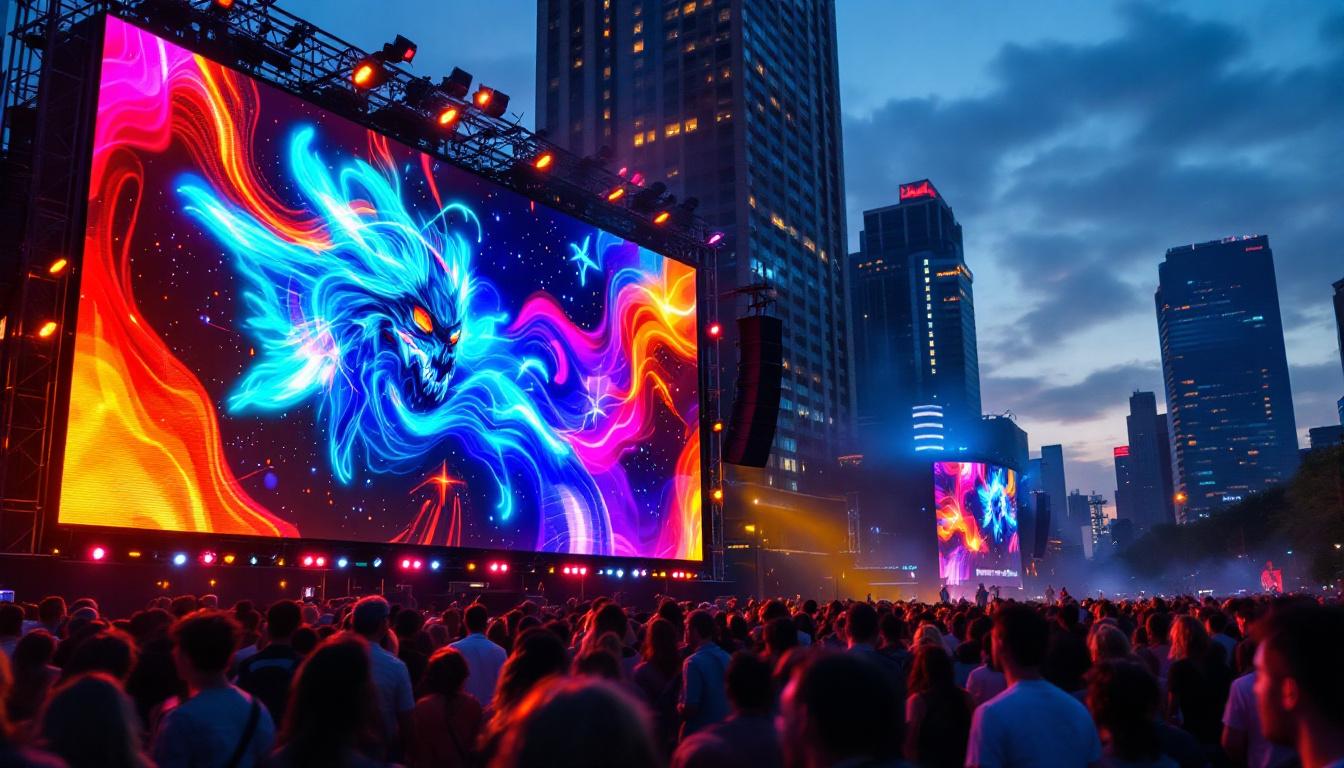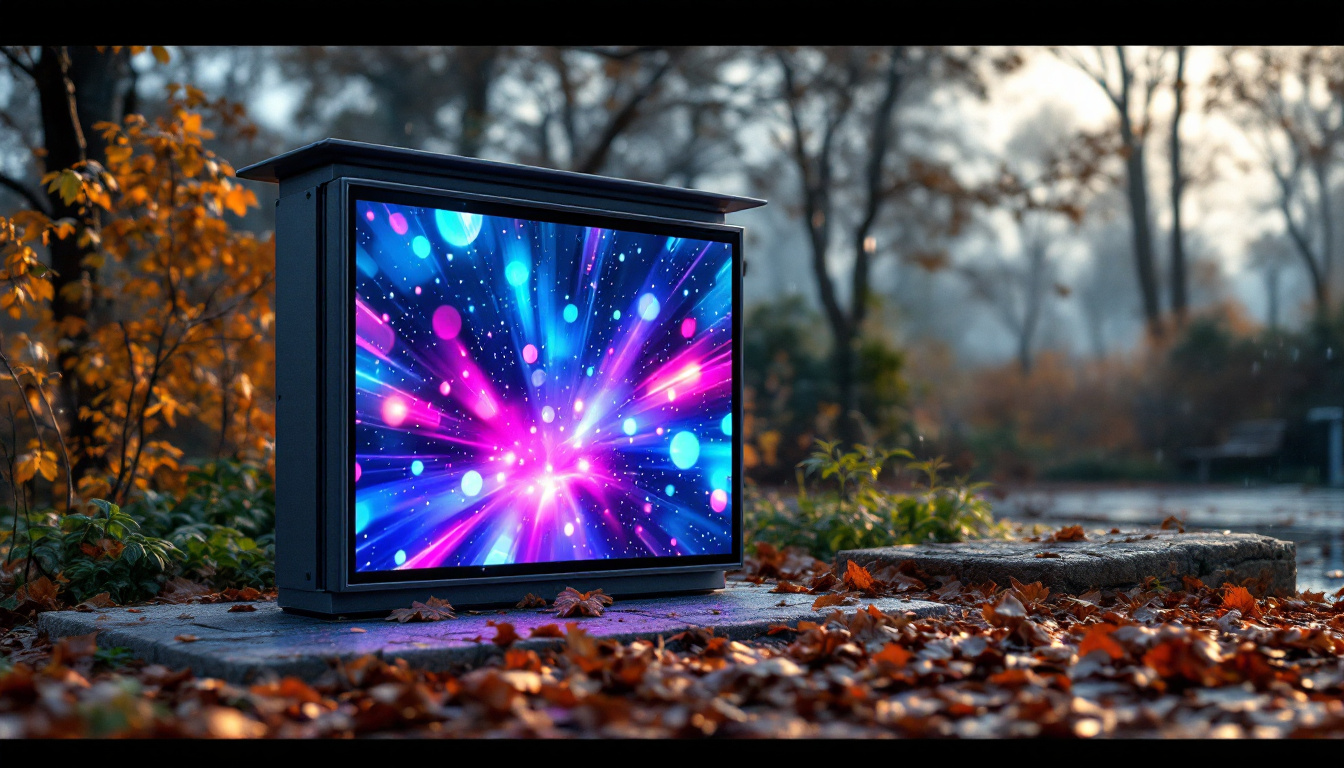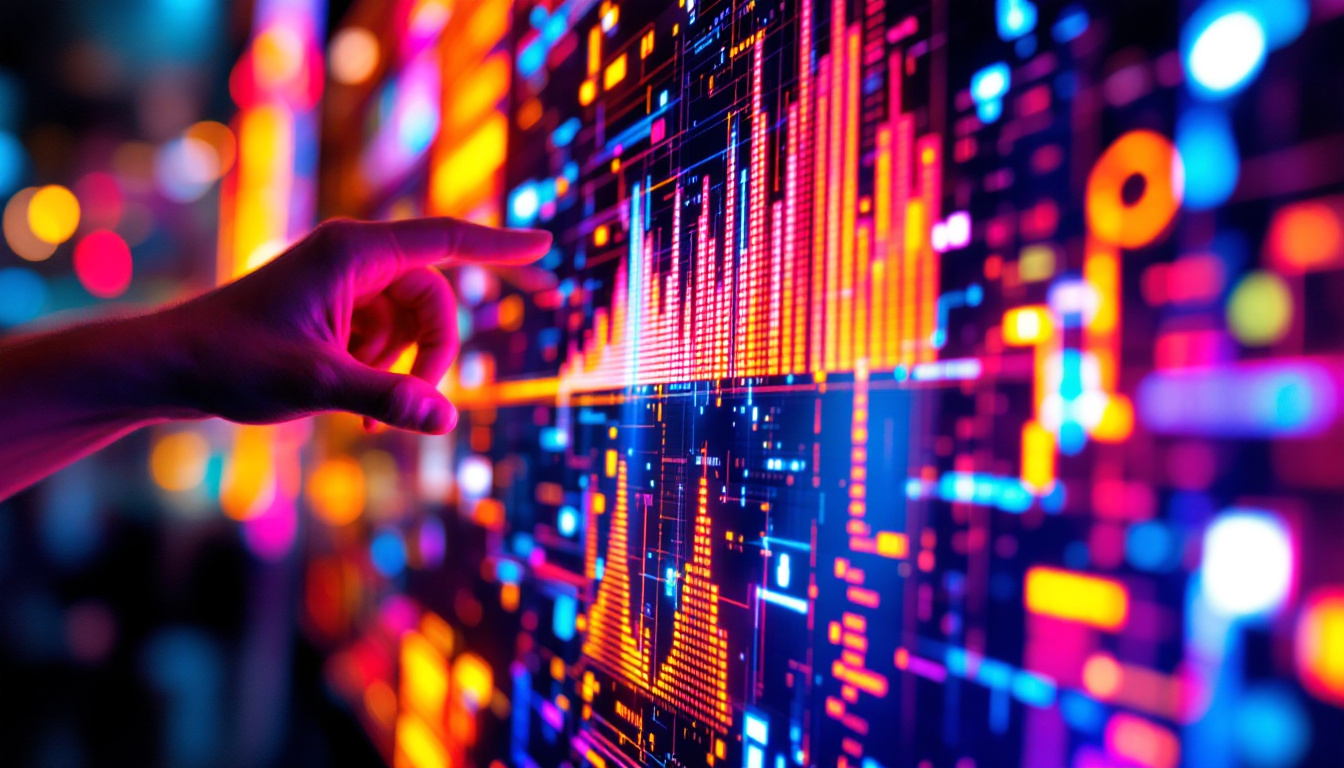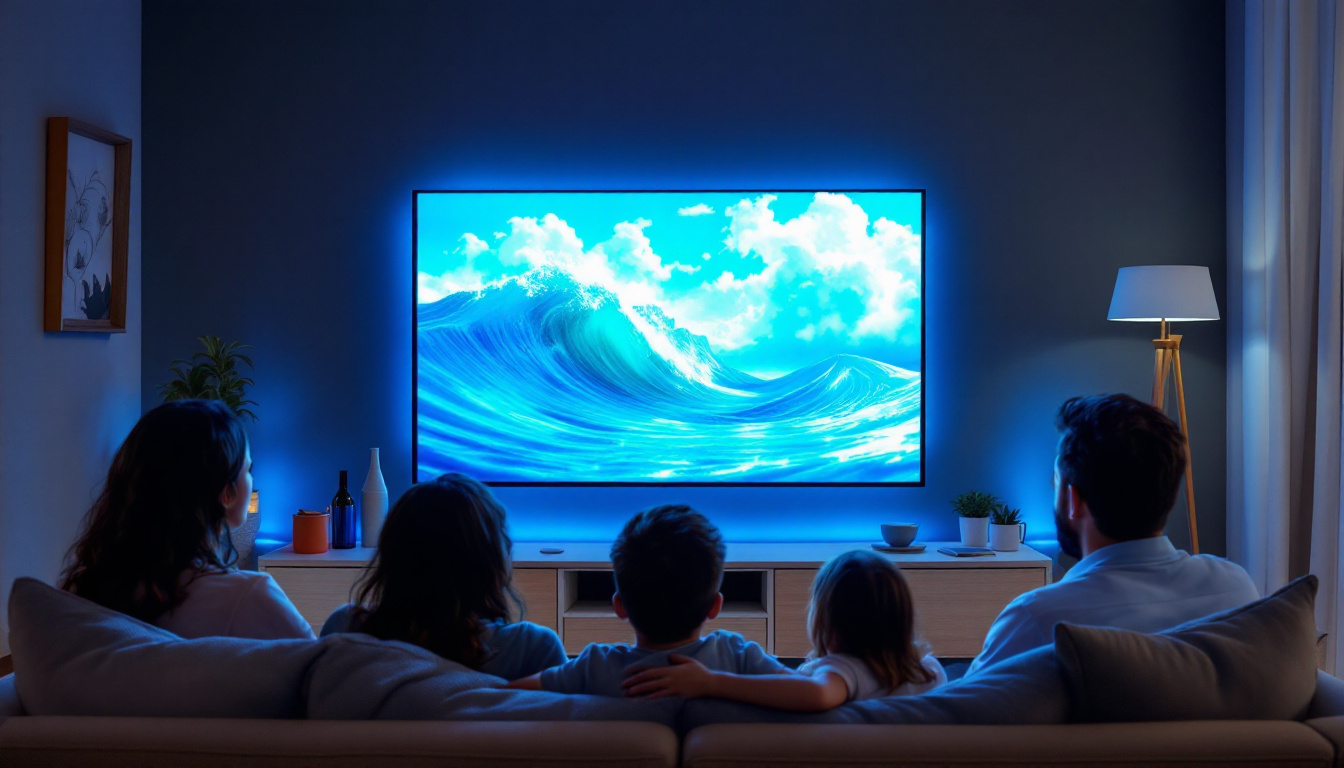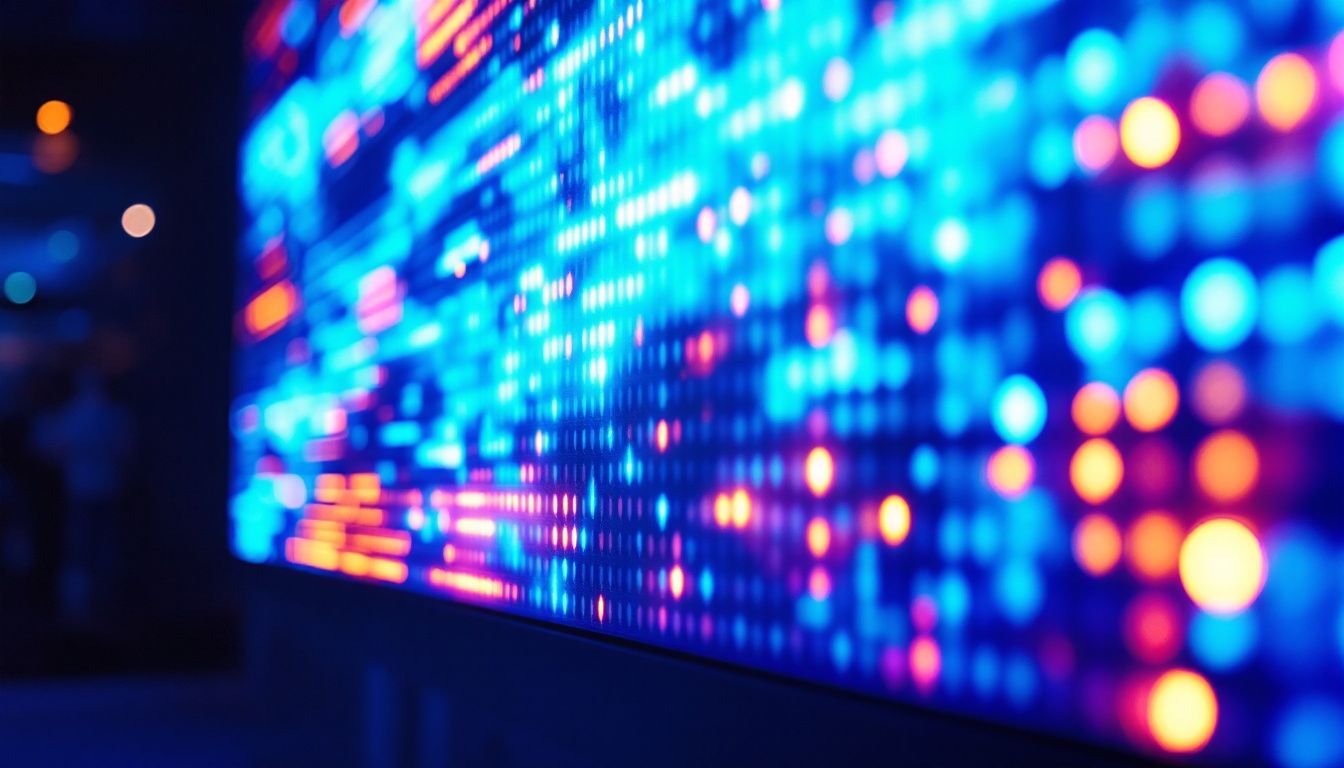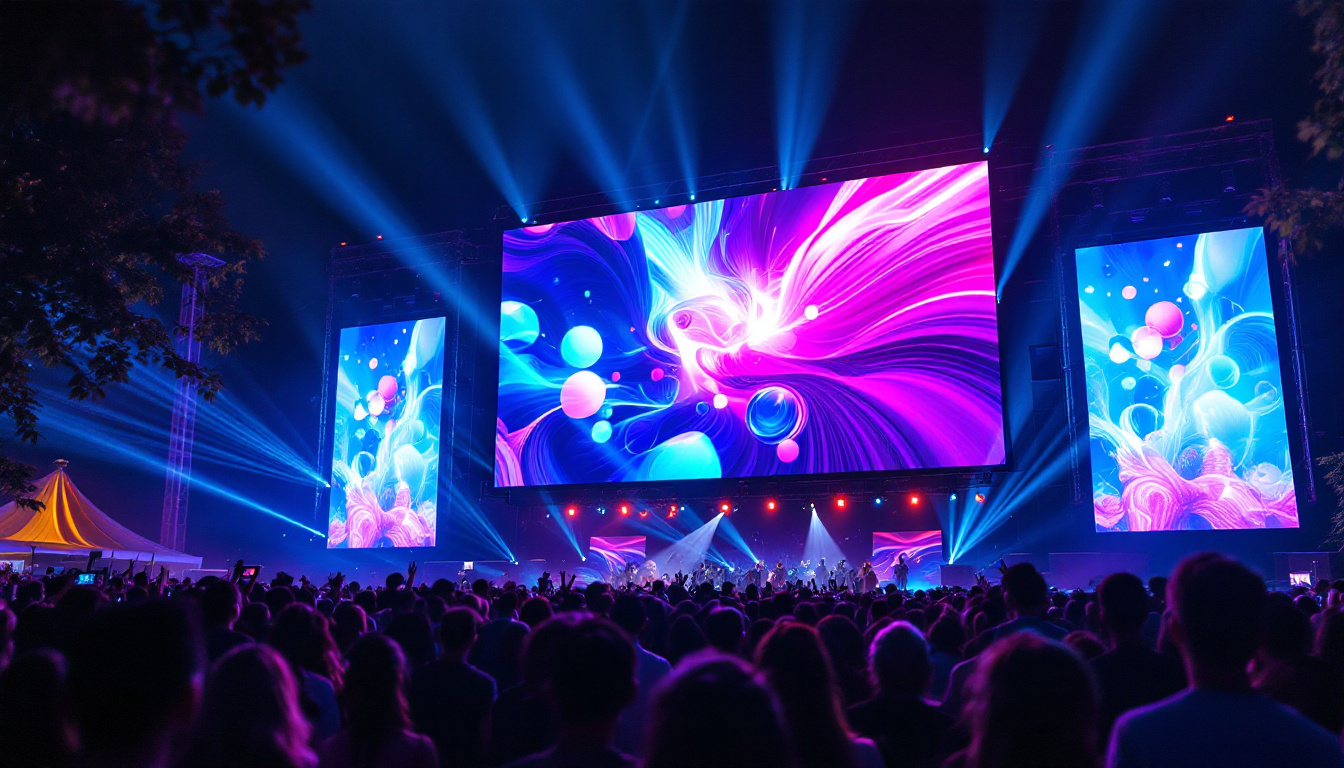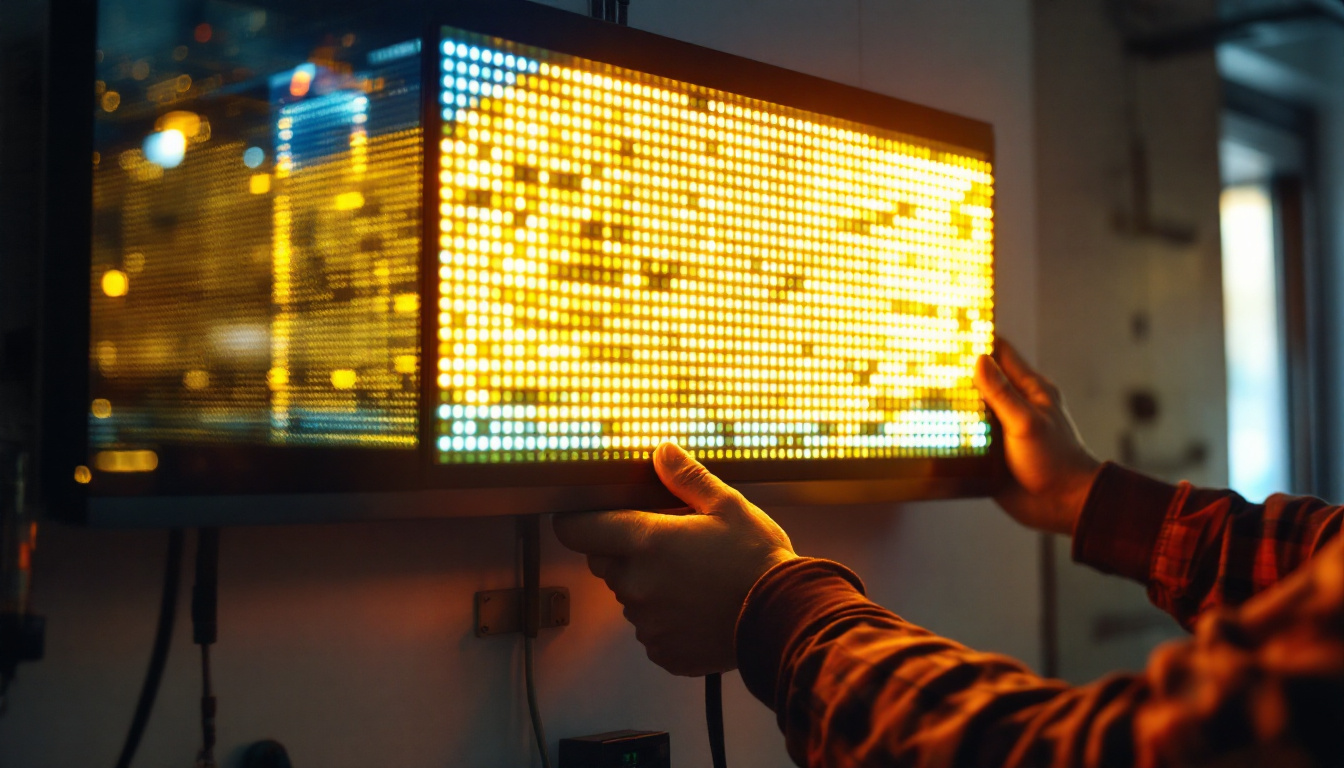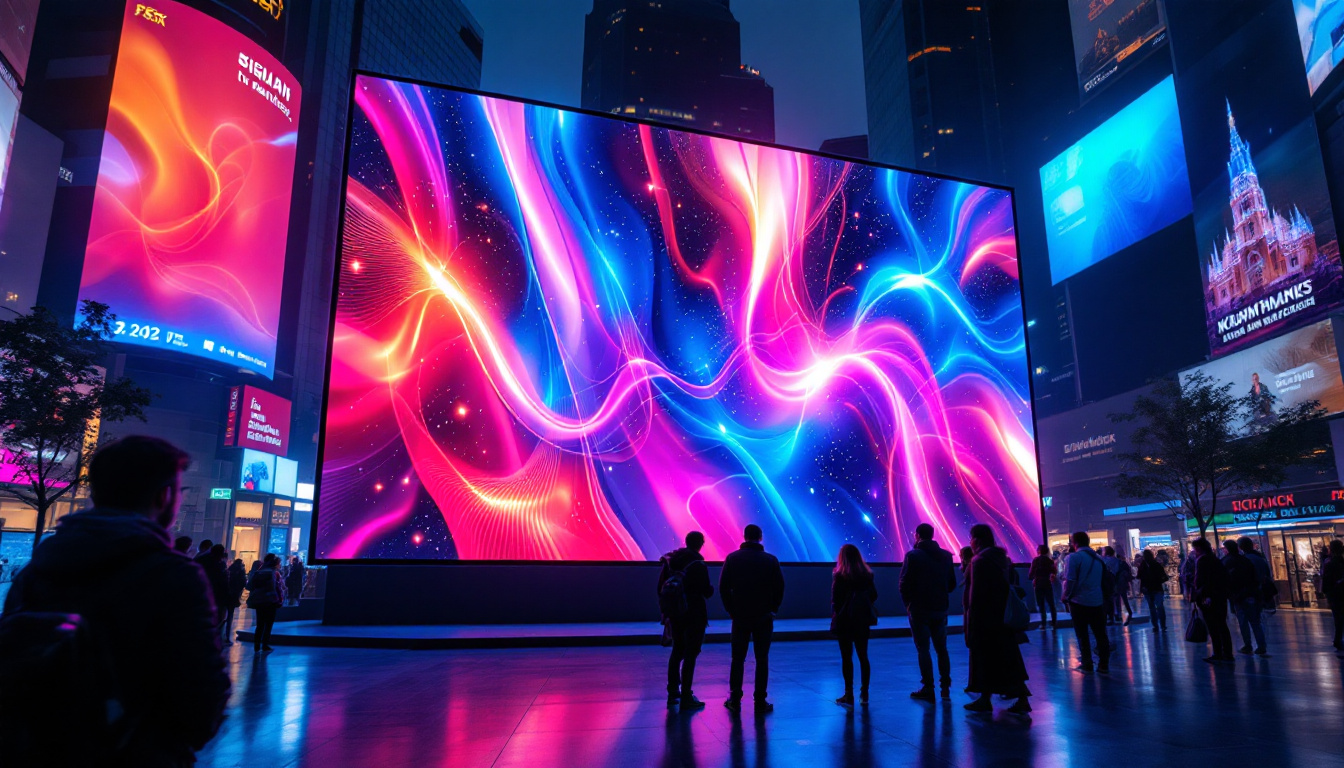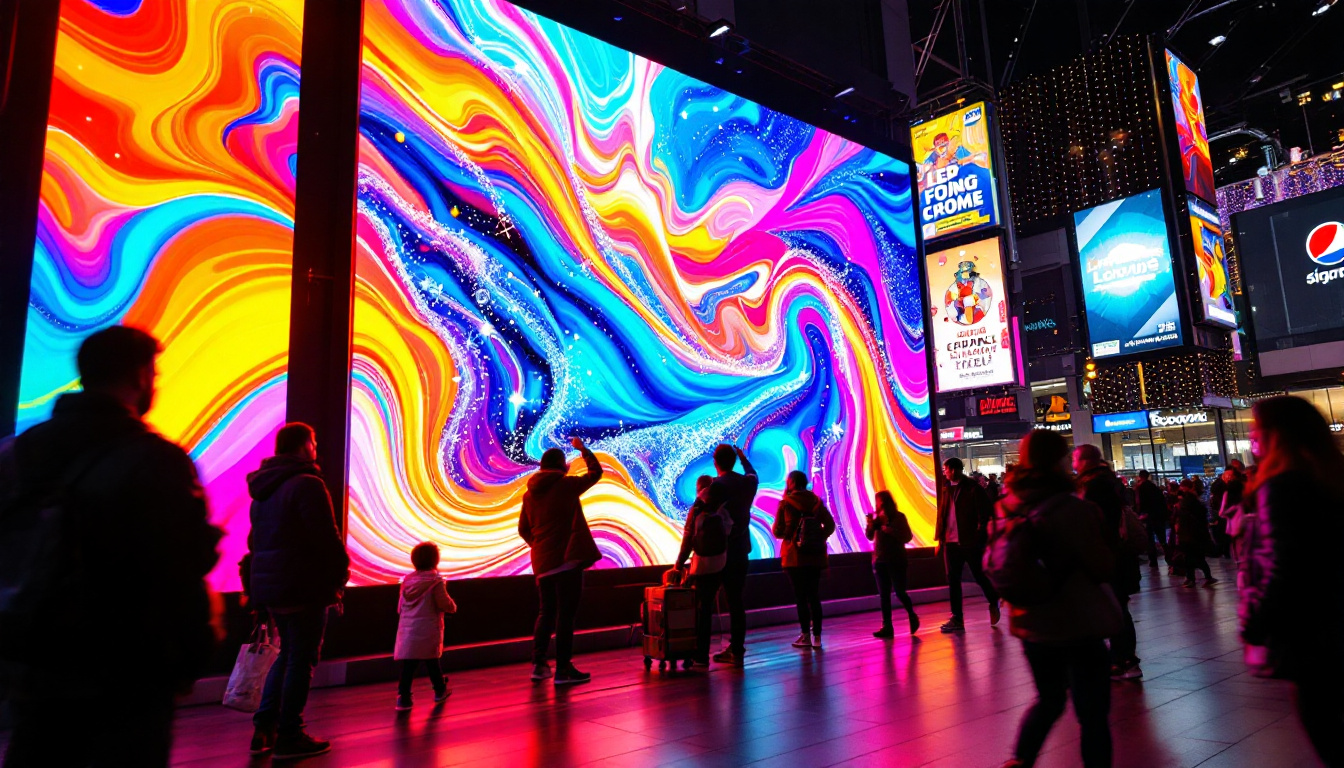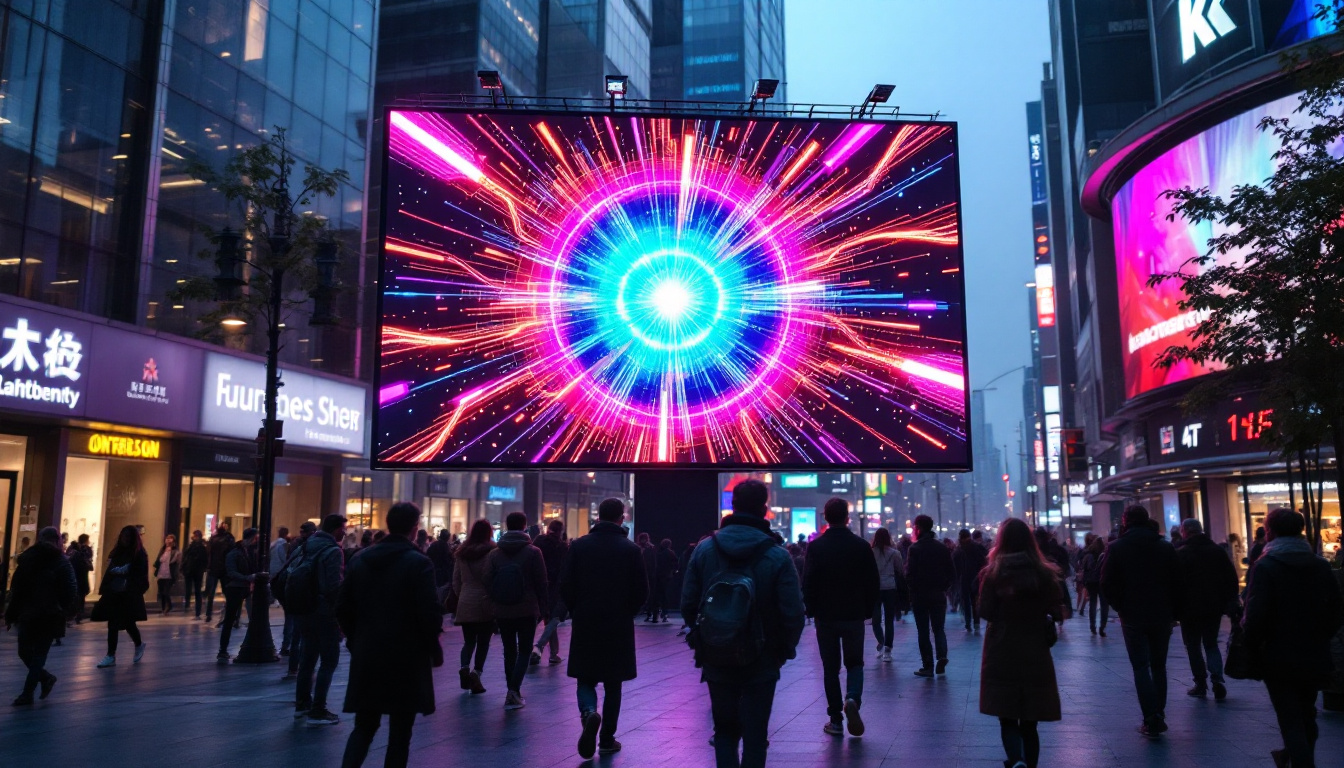In the realm of modern technology, LED displays have revolutionized the way we communicate, advertise, and engage with visual content. From massive billboards in bustling cities to the sleek screens of smartphones, LED technology has become ubiquitous. This article delves into the intricacies of LED displays, exploring their components, functionalities, and the innovative concept of “LED clouds.” By the end, readers will gain a comprehensive understanding of how these displays work and their impact on various industries.
Understanding LED Technology
Light Emitting Diodes (LEDs) are semiconductor devices that emit light when an electric current passes through them. This technology has evolved significantly since its inception, leading to the development of vibrant and efficient displays. The fundamental principle behind LEDs is electroluminescence, where the movement of electrons through a semiconductor material generates light. Over the years, advancements in materials and manufacturing processes have allowed for the creation of LEDs that are not only brighter but also more energy-efficient, contributing to a significant reduction in energy consumption compared to traditional lighting solutions.
Moreover, the versatility of LED technology has led to its widespread adoption across various industries, from automotive lighting to architectural illumination. As a result, LEDs are now integral to modern lighting design, offering a range of colors and intensities that can be tailored to specific environments. The ongoing research into organic LEDs (OLEDs) and quantum dot LEDs (QLEDs) promises even more exciting developments, potentially revolutionizing how we perceive and interact with light in our daily lives.
The Components of LED Displays
LED displays consist of several key components that work together to produce high-quality images and videos. These components include:
- LED modules: These are the building blocks of LED displays, containing multiple LEDs arranged in a grid. Each module can be individually controlled to create a full-color image. The arrangement and density of these modules can vary, allowing for different resolutions and sizes to meet specific display needs.
- Control System: This system manages the operation of the LED display, processing input signals and controlling the brightness and color of each LED. Advanced control systems can also incorporate features such as remote monitoring and diagnostics, ensuring optimal performance and longevity of the display.
- Power Supply: LED displays require a stable power source to function efficiently. The power supply converts the electrical input into a format suitable for the LEDs. Additionally, modern power supplies are designed to be energy-efficient, minimizing waste and reducing operating costs.
Types of LED Displays
LED displays come in various types, each suited for different applications. The most common types include:
- Direct View LED Displays: These displays are made up of individual LEDs that are visible from the front, making them ideal for outdoor advertising and large events. Their high brightness levels ensure visibility even in direct sunlight, making them a popular choice for billboards and signage.
- LED Video Walls: Composed of multiple LED panels, video walls can create stunning visual experiences in venues like concert halls and sports arenas. These walls can be configured in various shapes and sizes, allowing for creative installations that captivate audiences.
- Transparent LED Displays: These innovative displays allow light to pass through, making them perfect for applications in retail environments where visibility is essential. They provide a unique way to showcase products while maintaining an open and airy feel in the space.
In addition to these common types, there are also niche applications for LED displays, such as flexible LED screens that can be curved or shaped to fit unconventional spaces. This flexibility opens up new possibilities for creative design in architecture and advertising. Furthermore, advancements in LED technology continue to push the boundaries, with developments in microLEDs promising even higher resolutions and better color accuracy, paving the way for the next generation of display technology.
The Advantages of LED Displays
LED displays offer numerous advantages over traditional display technologies, making them a preferred choice for various applications. Some of these benefits include:
Energy Efficiency
One of the most significant advantages of LED displays is their energy efficiency. Compared to traditional incandescent or fluorescent displays, LEDs consume significantly less power, leading to lower operational costs. This efficiency not only benefits businesses financially but also contributes to environmental sustainability.
Brightness and Visibility
LED displays are known for their exceptional brightness, making them easily visible even in direct sunlight. This characteristic is particularly advantageous for outdoor advertising, where visibility can make or break a campaign. The high contrast and vibrant colors of LED displays ensure that messages are communicated effectively, regardless of lighting conditions.
Longevity and Durability
LED technology boasts a long lifespan, often exceeding 50,000 hours of use. This durability means that businesses can rely on LED displays for extended periods without the need for frequent replacements. Additionally, LEDs are more resistant to shock and vibration compared to traditional display technologies, making them suitable for a variety of environments.
Exploring LED Clouds
The concept of “LED clouds” represents a new frontier in display technology, combining the benefits of LED displays with innovative design and functionality. LED clouds refer to a network of interconnected LED displays that can work together to create dynamic visual experiences.
What Are LED Clouds?
LED clouds consist of multiple LED panels that are strategically arranged to form a cohesive display. These panels can be controlled individually or as a collective unit, allowing for a wide range of creative possibilities. The term “cloud” signifies the interconnected nature of these displays, which can be managed through a centralized control system.
Applications of LED Clouds
LED clouds have found applications in various sectors, including:
- Advertising: Brands can utilize LED clouds to create eye-catching advertisements that capture attention from multiple angles. The ability to display dynamic content enhances engagement and drives consumer interest.
- art installations: Artists are increasingly using LED clouds to create immersive installations that blend technology with creativity. These displays can transform spaces and provide unique experiences for viewers.
- Event Production: In the event industry, LED clouds can be used to enhance stage designs, providing stunning backdrops and visual effects that elevate performances.
How LED Clouds Work
The functionality of LED clouds relies on advanced technology that allows for seamless integration and control of multiple displays. Here’s a closer look at how they operate:
Centralized Control Systems
At the heart of an LED cloud is a centralized control system that manages the content displayed across all panels. This system can be programmed to synchronize displays, ensuring that they work together harmoniously. Content can be updated in real-time, allowing for dynamic advertising or artistic presentations.
Networking and Connectivity
LED clouds utilize networking technologies to connect multiple displays. This can involve wired connections or wireless solutions, depending on the installation requirements. The ability to connect displays over a network enables remote management, making it easier to update content and monitor performance.
Creative Content Creation
The versatility of LED clouds allows for the creation of engaging content that captivates audiences. Designers can use software to develop animations, videos, and interactive elements that take full advantage of the display capabilities. This creativity is essential for maximizing the impact of the LED cloud.
Challenges and Considerations
While LED clouds offer numerous benefits, there are also challenges and considerations that need to be addressed. Understanding these factors is crucial for successful implementation.
Installation and Maintenance
The installation of LED clouds can be complex, requiring careful planning and expertise. Ensuring that displays are properly aligned and calibrated is essential for achieving a cohesive visual experience. Additionally, maintenance is necessary to keep the displays functioning optimally, which may involve regular inspections and updates to the control software.
Cost Implications
Investing in LED cloud technology can be significant, especially for large-scale installations. Businesses must weigh the initial costs against the long-term benefits, considering factors such as energy savings and increased engagement. However, as technology continues to advance, prices are expected to become more accessible.
The Future of LED Displays
The future of LED displays, particularly in the context of LED clouds, is promising. As technology continues to evolve, several trends are emerging that will shape the industry.
Advancements in Display Technology
Ongoing research and development in LED technology are leading to improvements in resolution, color accuracy, and energy efficiency. The introduction of MicroLED and MiniLED technologies is expected to push the boundaries of what is possible in display quality, offering even more vibrant and detailed visuals.
Integration with Smart Technologies
As smart technologies become more prevalent, the integration of LED displays with IoT (Internet of Things) devices is on the rise. This integration will enable displays to interact with their environment, providing personalized content based on user preferences and behavior.
Environmental Considerations
With increasing awareness of environmental issues, the demand for sustainable display solutions is growing. Future LED displays are likely to focus on eco-friendly materials and energy-efficient designs, contributing to a more sustainable future.
Conclusion
LED displays, particularly in the form of LED clouds, represent a significant advancement in visual technology. Their energy efficiency, durability, and versatility make them an ideal choice for a wide range of applications, from advertising to artistic installations. As technology continues to evolve, the possibilities for LED displays are limitless, promising exciting innovations that will shape the future of visual communication.
understanding the intricacies of LED technology and the concept of LED clouds is essential for businesses and creatives alike. By harnessing the power of these displays, organizations can enhance their messaging, engage audiences, and stand out in a competitive landscape. As the world becomes increasingly visual, LED displays will undoubtedly play a pivotal role in shaping the way we experience and interact with information.
Discover the Future of Visual Communication with LumenMatrix
Ready to elevate your visual messaging and create unforgettable experiences? LumenMatrix is at the forefront of LED display innovation, offering a comprehensive range of solutions that bring your vision to life. From Indoor and Outdoor LED Wall Displays to specialized options like Vehicle, Sports, and Floor LED Displays, our technology is designed to captivate and engage. Embrace the future with Custom, All-in-One, and LED Transparent Displays that set new standards in the industry. Don’t just communicate—revolutionize your message. Check out LumenMatrix LED Display Solutions today and transform the way you connect with your audience.

